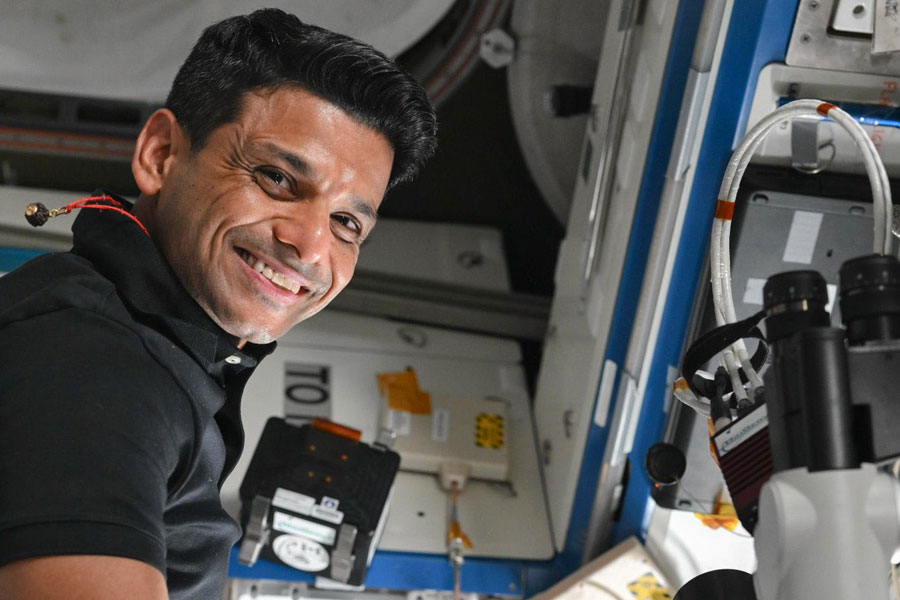.jpg)
Calcutta needs immediate seismic microzonation and a risk-assessment study to minimise damage in case of a major earthquake, temblor experts and geologists say.
Seismic microzonation is a system of dividing a potential seismic or earthquake-prone area into zones based on geological and geophysical characteristics. The process, yet to be undertaken in the city, is aimed at understanding soil response during a quake.
Experts said the microzonation is a must before any further construction is allowed in the city.
"The vulnerability (of Calcutta) to earthquake damage has increased manifold with time. More than 80 per cent of the city has built-up areas dotted with high-rise buildings, congested business districts, hospital and schools. There is hardly any town planning," D.R. Nandy, a retired director of Geological Survey of India, had warned in a paper published two decades ago. The situation has worsened since.
Calcutta falls on the border between zones III and IV (I being the least and V the most vulnerable zone) but the city's vulnerability quotient is several notches higher because of factors such as high population density, lack of adequate open space and the large number of old, ill-maintained buildings.
"Many cities in the world assess their earthquake vulnerability based on factors such as the number of high-rise buildings, old buildings and slums; road width; soil status; groundwater situation etc. There is no such assessment for Calcutta," said geophysicist Tapas Ghatak, formerly with Geological Survey of India and the Calcutta Metropolitan Development Authority.
This newspaper has found that such studies have been carried out in several Indian cities, such as Delhi, Mumbai, Chennai and Bangalore.
The Australian city of New Castle had prepared a detailed earthquake zonation map two decades ago, based on which the authorities have prepared a building policy. "Schools, colleges, hospitals and public service buildings are not allowed near high-risk areas under the policy," said an earthquake expert familiar with New Castle's zonation map.
The map was funded by the Newcastle City Council, which is equivalent to our Calcutta Municipal Corporation.
China, which has a history of severe earthquakes, had almost three decades ago introduced a mechanism for earthquake risk assessment for its cities. The findings of the study, which included seismic microzonation, determine the building policies of the cities.
Calcutta is among the top eight most populous global cities vulnerable to earthquake, according to a UN report. The other cities are Mumbai, Delhi, Tokyo, Mexico City, New York, Shanghai and Jakarta.
All eight, the report prepared by the United Nations International Strategy for Disaster Reduction states, are on tectonic fault-lines.
"The Mymansingh Calcutta hinge zone (a hinge zone is a weak area under the earth's surface where quakes orginate), which is about 25km in width and contains a number of active faults, passes below the city," said Pradip Sikdar, a geologist and earthquake scientist associated with the Indian Institute of Social Welfare and Business Management.
Sikdar pointed out that though nature has significantly cushioned Calcutta against deadly impact of earthquakes, the city is increasingly eating away the buffer through a combination of poor planning and poorer practice.
"Calcutta has a 7.5km bed of alluvial soil, clay and tertiary rock in its belly, which is expected to cushion the city against deadly impact of an earthquake. Unless the city is hit by an earthquake of intensity 7 or more on the Richter scale, the damage after an earthquake will not be too grave if we plan properly," Sikdar said.
The city, however, is steadily losing its cushion, the expert pointed out.
Geologist Ghatak urged Calcuttans, especially the residents of high-rise buildings, to pressure the civic body and promoters to put the earthquake vulnerability of the buildings in public domain.
"The condition and quality of buildings in India, including in Calcutta, are poor when it comes to seismic performance," said Avikal Somvanshi, a senior research associate at the Delhi-based non-profit Centre for Science and Environment. "In fact, the performances of reinforced concrete buildings are unsatisfactory."
According to a senior CMC official, there are at least 5,000 illegal buildings in the city, many of which are in slums and on recently reclaimed water bodies. "These structures are extremely vulnerable to earthquake damage," the official said.
A CMC engineer pointed out that design of the buildings is a key concern. "Very rigidly designed buildings, especially those built on thin columns without any supporting wall, as is the practice now to maximise parking space on the ground floor, is a recipe for disaster," he said,

.jpg)








